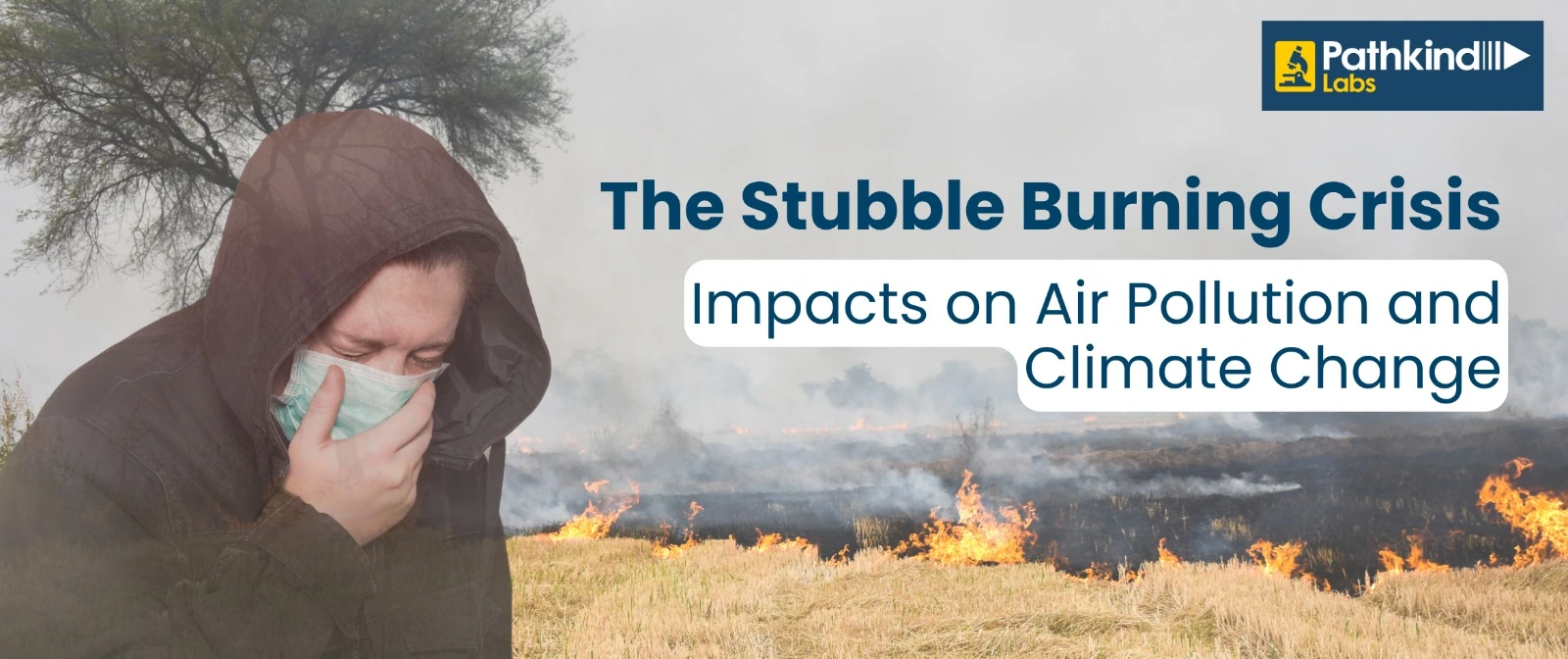Air pollution poses a significant health risk worldwide. Lowering pollution levels could ease the impact of diseases like stroke, heart disease, lung cancer, and respiratory issues, including asthma. Shockingly, in 2019, almost everyone, 99% of the world's population, lived in areas that failed to meet WHO air quality guidelines.
This article confronts the hidden consequences, urging us to rethink the impacts of stubble burning on our planet's delicate air quality and broader climate dynamics.
Air Pollution: 6.7 Million Lives Lost
Every year, a mix of outdoor and household air pollution leads to 6.7 million premature deaths. Specifically, in 2019, outdoor air pollution caused 4.2 million premature deaths globally, with 89% occurring in low- and middle-income countries, especially in the WHO Southeast Asia and Western Pacific Regions.
To tackle this, policies and investments are needed. Cleaner transport, energy-efficient homes, responsible power generation, and improved waste management can cut key sources of outdoor air pollution. Providing clean household energy is crucial, especially in regions facing significant challenges. One such challenge to tackle is stubble burning, and for that, it is crucial to understand its impact.
The Unseen Consequences of Stubble Burning
Every year, a mix of outdoor and household air pollution leads to 6.7 million premature deaths. Specifically, in 2019, outdoor air pollution caused 4.2 million premature deaths globally, with 89% occurring in low- and middle-income countries, especially in the WHO Southeast Asia and Western Pacific Regions.
This dual impact underscores the urgent need to address stubble burning as a localised air quality issue and as a critical player in the broader challenge of climate change. Integrating researchful insights emphasises the interconnectedness of air pollution and climate change, urging a holistic approach to address the unseen consequences of stubble burning on our planet.
Human Impact
The surge in air pollution due to stubble burning poses significant health risks, notably amplifying respiratory diseases and cardiovascular issues. The escalating air quality index (AQI) is crucial, revealing heightened health hazards within affected regions. Through personal stories and community perspectives, we gain insights into the daily struggles of individuals living amidst deteriorating air quality. These firsthand accounts humanise the statistics and underscore the urgent need to address stubble burning's impact on public health and the communities it profoundly affects.
Global Relevance
Stubble burning transcends regional borders, exerting an international impact on global air quality and climate dynamics. Recent data indicates that emissions from these fires contribute to a significant share of worldwide greenhouse gas emissions. A comparative analysis underscores the global nature of the issue, revealing similarities with other agricultural practices globally.
The need for a collective, global perspective becomes evident as we recognise the interconnectedness of stubble burning to broader environmental challenges, demanding collaborative solutions on an international scale.
Addressing stubble burning faces significant challenges, including economic factors, deeply rooted agricultural practices, and a need for widespread awareness. By tackling these challenges head-on, we pave the way for a sustainable future where stubble burning is replaced with environmentally friendly practices, mitigating its adverse impacts on air quality and climate.
FAQs (Frequently Asked Questions)
- What is stubble burning, and why is it a concern for our planet?
Answer:- Stubble burning is basically paddy residues from a crop field by intentionally setting fire to the straw that remains. This process leads to the emission of harmful gases that can cause serious health implications.
- What are the health consequences of stubble-burning emissions?
Answer:- Some of the major health consequences of stubble-burning are:
Respiratory diseases
Cardiovascular issues
- How does stubble burning contribute to climate change?
Answer:- Stubble burning releases harmless gases like carbon dioxide and methane that play a direct role in greenhouse effect and global warming. The cumulative impact intensifies climate change, affecting weather patterns and ecosystems.
- How does stubble burning affect air quality?
Answer:- Stubble burning releases particulate matter, carbon monoxide, and nitrogen oxides, significantly degrading air quality. This adversely affects respiratory health and contributes to the overall burden of air pollution.
- What are the alternatives to stubble burning?
Answer:- Some of the most prominent alternatives to stubble burning include sustainable agricultural practices, crop residue management techniques, and promoting awareness. In this regard, policy changes, technological innovations, and community initiatives are also crucial.
![]() Component: Haemoglobin (Hb), Total WBC Count / TLC, RBC Count, PCV / Hematocrit, MCV, MCH, MCHC, RDW (Red Cell Distribution Width), DLC (Differential Leucocyte Count), Platelet Count, MPV (Mean Platelet Volume), Peripheral smear examination
Component: Haemoglobin (Hb), Total WBC Count / TLC, RBC Count, PCV / Hematocrit, MCV, MCH, MCHC, RDW (Red Cell Distribution Width), DLC (Differential Leucocyte Count), Platelet Count, MPV (Mean Platelet Volume), Peripheral smear examination
![]() Include: parameters
Include: parameters
![]() Specimen: WB EDTA
Specimen: WB EDTA
![]() Report Delivery:
Report Delivery:



















.webp)


